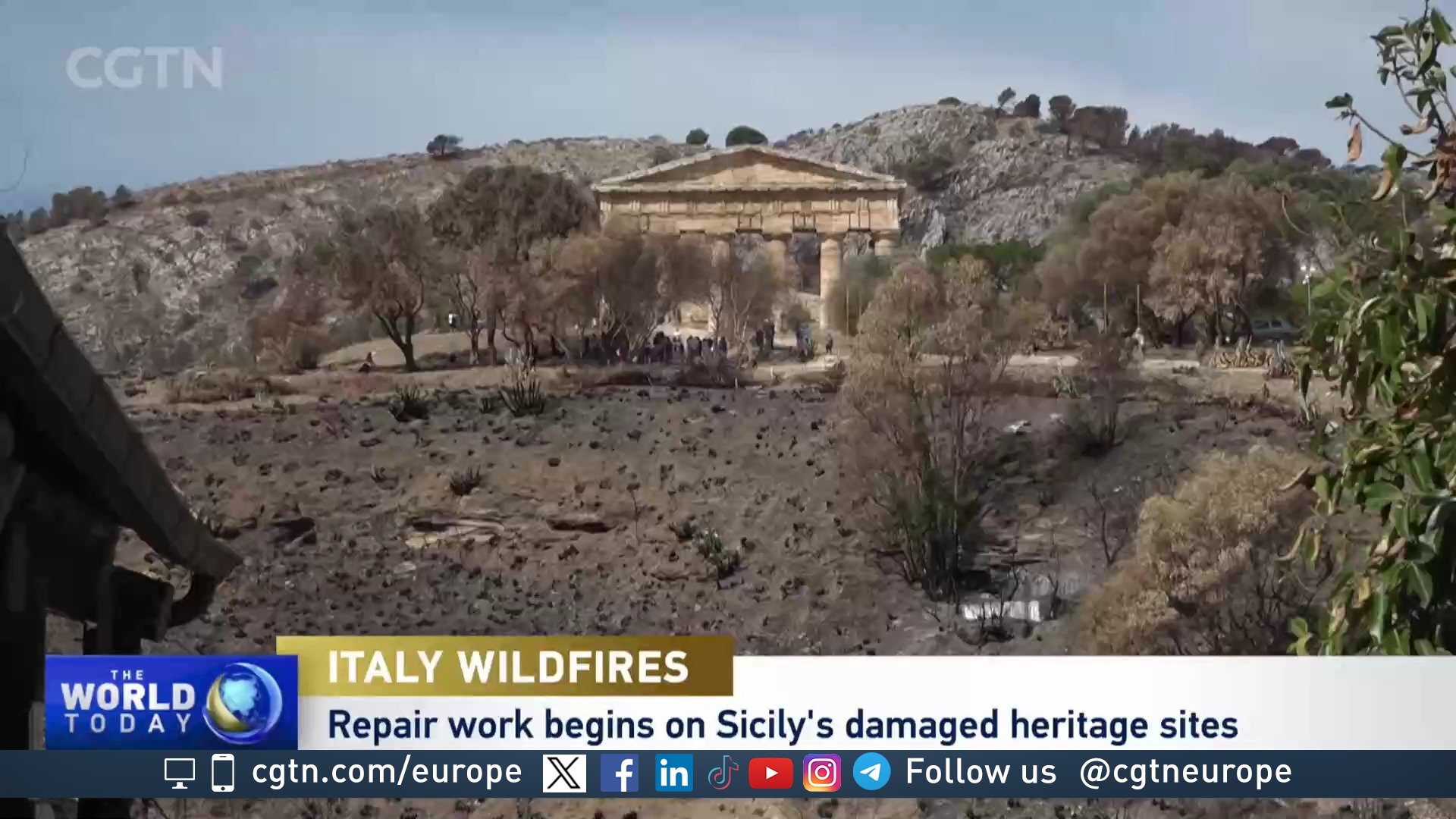Delicate repair work is underway at heritage sites on the Italian island of Sicily which suffered extensive damage during summer wildfires.
The flames nearly destroyed the majestic site of Segesta in Sicily, built around 420 BC and considered the best example of architecture of the ancient Dorian people of Europe.
However, even though the temple was spared, the archaeological park still suffered significant damage and director Luigi Biondo says this had professional and personal consequences.
“It’s a passage in my life that is very sad, very complicated, because part of my life has been burned. I feel like a hero in a Greek tragedy, wounded but still standing,” he said. declared.
“We have made an initial count of the damage, which amounts to at least $1.8 million. There were 200 hectares of land burned, we lost the kiosk and at least two kilometers of security fence.”
Segesta was at the heart of the emergency at the end of July when fires ravaged the island. Three people died and much property was lost.
Another cultural site that suffered irreparable damage is the iconic church of Santa Maria di Gesù. Brother Vincenzo Bruccoleri was among those on the front line.
“We had no time to think, we did everything we could with the means at our disposal, but the fire was stronger than us and it destroyed the church before our eyes,” he said. -he declares.
Among the relics reduced to ashes was the 16th-century coffin of Benedict the Moor, a revered Catholic saint.

Repair work is essential – but delicate. /CGTN
Repair work is essential – but delicate. /CGTN
Giampiero Cannella, Palermo’s culture minister, says the community is devastated.
“It was really a very, very worrying event and knowing that the body of Saint Benedict the Moor, which had remained intact for almost 500 years, had been lost, aroused a lot of emotion among all Palermitans,” he said.
The cultural loss cannot be quantified but the structural damage is estimated at three million dollars.
The wildfires in Segesta and Palermo occurred as temperatures soared to 47 degrees Celsius, the second hottest day on record on the island.
As winters become drier and summers hotter, experts say Sicily will experience extreme weather events more frequently.
In response, Italy is acquiring more firefighting planes and introducing tougher penalties for arsonists.
“We are studying new surveillance measures, such as the use of drones in dense bush areas, to protect Sicily which has many cultural monuments,” explains Cannella.
“I hope that in the future there will be more strength, love and desire to preserve these traces of our heritage and our identity,” Biondo says hopefully.
This is a key message as the community attempts to rebuild and recover.

To subscribe to Storyboard: A weekly newsletter brings you the best of CGTN every Friday



